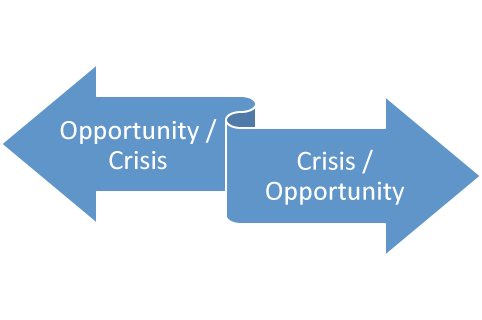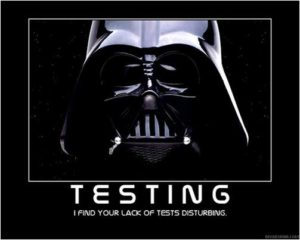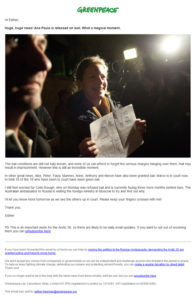Email is one of Greenpeace’s key tools for inspiring, engaging and mobilising people, both online and offline, in order to put pressure on decision makers and create change that will protect this beautiful planet we share.
That’s why we’ve brought in email writing experts from Make Believe in Australia to provide training and coaching for Greenpeace staff globally to improve and hone their writing skills.
These methods are the culmination of years of email writing experience from MoveOn, Avaaz and GetUp and their model is now helping Greenpeace offices inspire and engage more people to campaign with us for change.
Here are some of the many things we’ve learned over the last few months.
1. Single issue focus works better than multiple focus in emails – testing over a long period of time has shown that multiple asks give people too much choice and decreases participation rates. A single issue email is closer to the way we naturally communicate over email and it focuses on the most important thing we’re asking people to do.
2. Tell a bit of the story at a time and spread it out – many NGOs have so much information they want to communicate that they try to fit it all in one email. To more effectively keep a reader’s attention (and respect their limited time) it’s better to give small part of the story at a time and spread the story out over several emails as it unfolds.
3. Frame the Problem as something we can address – boil it down into something we can do something about right now and outline it simply explaining the problem they can help solve. It helps to identify the antagonist. What’s the barrier to change we need help with?
4. Match the solution to the size and seriousness of the problem – can it be changed and is the solution plausible? We’re not going to solve a big problem like climate change with one email petition, so the solution needs to match the size of the problem. And explain why this solution is the one that is going to make change happen, even if only a small step on the route to big change.
5. The solution begins with the reader – put the supporter at the centre of the strategy, their action must be instrumental to success, and know why their action matters. And it’s got to be plausible that we can achieve it (even if the issue or solution isn’t winnable in this one action).

The reader focused Theory of Change puts the reader at the centre of the strategy to win the campaign.
6. What is the movement story? – NGOs are very good at explaining the “what” and the “how”, not so good on “why”. The movement story covers who we are and why we’re here. It speaks to our supporters’ aspirational values – peace, justice, wholeness, truth, beauty, simplicity, uniqueness, perfection…
7. Use illustrative language, avoid clichéd language – create a mental picture in the readers mind that taps into their emotions and feels authentic. Emotions motivate people to act, information makes people think.
8. The only way to create a good subject line is to test it – it’s a vital part of the email because if people don’t open the email, your brilliant writing won’t even be read. While there are many tricks you can try, overuse will create diminishing results, so the only way to make sure you have the best subject line every time is to test multiple subject lines with a segment of your list.
9. Give a deadline and target for action – People respond well to deadlines, make it specific. This is ideally tied to external events to give urgency, but if you don’t have an external deadline, use an internal one and justify it.
10. The most well read part of the email body – Based on response rates from some organisations, a “PS” at the end of the email is one of the most read components. You can cover a new topic, or summarise the main email content – but with a new take on the issues. It should be used sparingly otherwise it becomes less effective.
Bonus question: Before you send your supporter email, ask yourself what’s the reader’s excuse for not doing what you’re asking? How can you subtly or overtly address excuses they may come up with?
Make Believe started working with Greenpeace in March and will continue training and coaching Greenpeace staff throughout June and July. The training is based on email methods developed by GetUp, Avaaz and MoveOn. This list was compiled from the Make Believe Email Writing Workshop delivered for Greenpeace UK in March 2012



